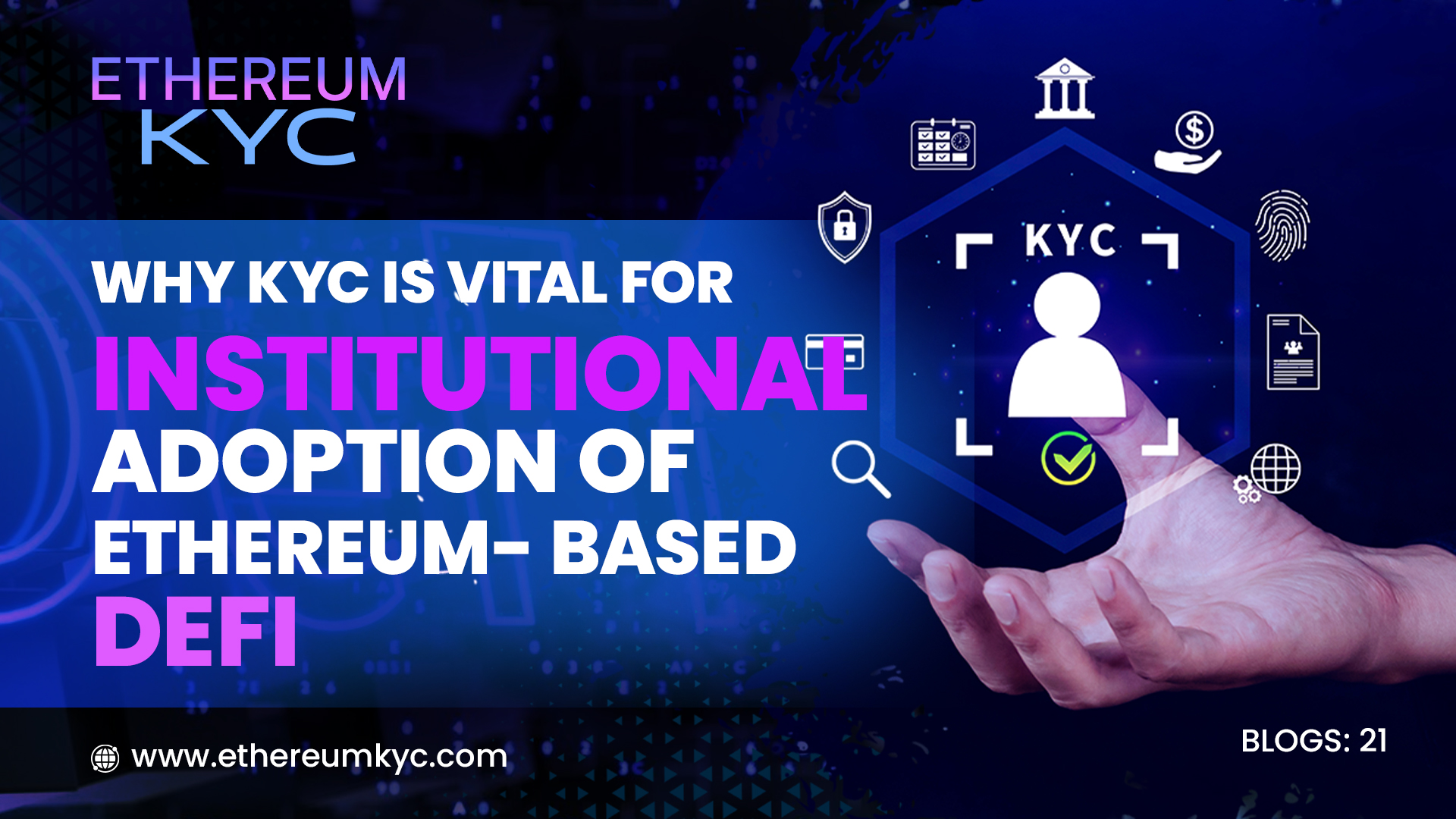December 29, 2024
Why KYC is Vital for Institutional Adoption of Ethereum-Based DeFi
Decentralized Finance (DeFi) on Ethereum has revolutionized the financial industry by offering transparent, permissionless, and efficient alternatives to traditional systems. However, for institutions to fully adopt Ethereum-based DeFi, robust Know Your Customer (KYC) protocols are essential. These measures address critical compliance, security, and trust challenges, enabling institutions to integrate with DeFi ecosystems confidently.
The Institutional Interest in Ethereum-Based DeFi
- High Yield Opportunities:
DeFi offers innovative financial products, such as yield farming and staking, with significantly higher returns compared to traditional finance. - Transparency and Accessibility:
Smart contracts on Ethereum ensure transaction transparency and reduce intermediaries, appealing to institutions looking for efficient systems. - Cross-Border Transactions:
Ethereum facilitates seamless global transactions, making it attractive for institutions operating in multiple jurisdictions.
Barriers to Institutional Adoption
Despite its benefits, Ethereum-based DeFi faces hurdles for institutional adoption:
- Regulatory Uncertainty:
Lack of clarity around compliance requirements poses significant risks for institutions. - Security Concerns:
The pseudonymous nature of DeFi raises concerns about money laundering and fraudulent activities. - Reputation Management:
Institutions risk reputational damage if associated with illicit activities within DeFi ecosystems.
The Role of KYC in Bridging the Gap
- Regulatory Compliance:
KYC ensures that DeFi platforms adhere to Anti-Money Laundering (AML) and Counter-Terrorism Financing (CTF) regulations, making them viable for institutional use. - Risk Mitigation:
By verifying user identities, KYC reduces the risk of fraudulent activities, protecting both institutions and the broader ecosystem. - Enhanced Trust:
KYC-compliant DeFi platforms build credibility, fostering trust among institutional investors and regulators.
Key Benefits of KYC for Institutions
- Legal Assurance:
Institutions can operate within legal frameworks, reducing risks of penalties and non-compliance. - Data Transparency:
KYC ensures traceability of transactions, enabling institutions to meet reporting requirements efficiently. - Improved Security:
Verified participants lower the risk of malicious actors within the ecosystem, enhancing overall security.
KYC’s Role in Institutional Integration
- Onboarding Institutional Users:
KYC streamlines the onboarding process by verifying identities and ensuring compliance with global standards. - Facilitating Collaboration with Regulators:
Institutions can collaborate with regulators by demonstrating adherence to KYC and AML protocols, paving the way for broader adoption. - Building a Sustainable Ecosystem:
KYC encourages responsible participation, creating a balanced ecosystem where institutions can thrive alongside retail users.
Real-World Examples
- Aave Arc:
Aave introduced a KYC-compliant DeFi platform designed specifically for institutional investors, enabling them to access DeFi while adhering to regulatory requirements. - Compound Treasury:
By implementing KYC measures, Compound Treasury has attracted institutional clients seeking fixed-rate returns within a compliant framework.
Challenges and Solutions
- Balancing Privacy and Compliance:
Challenge: Institutions value privacy, while KYC demands personal data.
Solution: Decentralized identity solutions allow institutions to verify participants without exposing sensitive information. - Scalability Concerns:
Challenge: Implementing KYC at scale can slow transactions.
Solution: Automated KYC processes leverage blockchain technology for seamless scalability.
The Future of KYC in Ethereum-Based DeFi
As Ethereum scales through upgrades like Layer 2 solutions, integrating KYC will become increasingly efficient. Institutions, equipped with regulatory clarity and robust security protocols, will drive the next wave of growth in Ethereum-based DeFi. KYC will remain at the core of this transformation, bridging the gap between decentralized technology and traditional finance.





